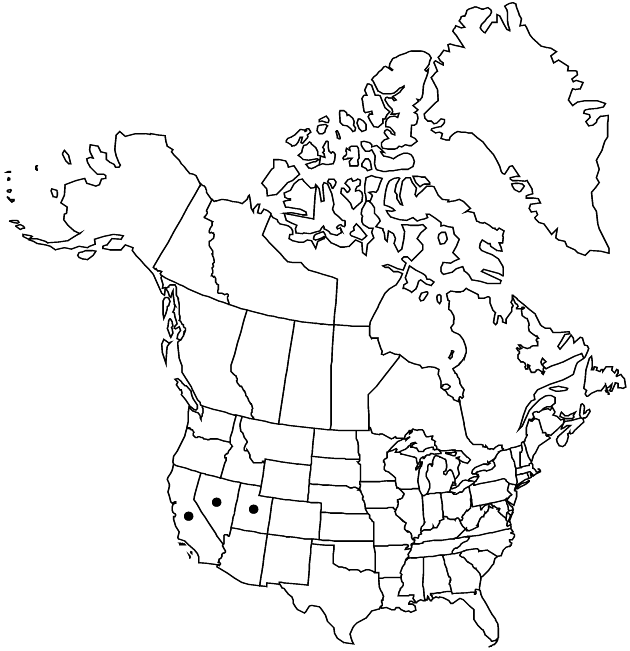Show Lower Taxa
Difference between revisions of "Tetradymia axillaris"
Bot. Gaz. 37: 277. 1904.
Endemic
imported>Volume Importer |
RevisionBot (talk | contribs) m (Bot: Adding category Revised Since Print) |
||
| Line 65: | Line 65: | ||
}}<!-- | }}<!-- | ||
| − | -->[[Category:Treatment]][[Category:Tetradymia]] | + | --> |
| + | |||
| + | [[Category:Treatment]] | ||
| + | [[Category:Tetradymia]] | ||
| + | [[Category:Revised Since Print]] | ||
Latest revision as of 18:28, 6 November 2020
Shrubs, 50–150 cm. Stems 1–5+, erect or spreading, spiny, evenly pannose. Leaves: primaries forming straight, ± squarrose spines, 10–50 mm; secondaries filiform to clavate, 2–12(–20) mm, sparsely arachnose or glabrous. Heads 1–3 (in axils of spines). Peduncles 4–15 mm. Involucres turbinate to campanulate, 7–9 mm. Phyllaries 5, ovate. Florets 5–7; corollas pale yellow, 7.5–9 mm. Cypselae 4.5–5.5 mm, densely pilose (hairs 6–14 mm); pappi of ca. 25, subulate to setiform scales 6–7.5 mm.
Distribution

Calif., Nev., Utah
Discussion
Varieties 2 (2 in the flora).
The two varieties of Tetradymia axillaris are partially sympatric and intergrade in areas of overlap.
Selected References
None.
Key
| 1 | Peduncles and phyllaries pannose to tomentose; hairs of cypselae 9–14 mm | Tetradymia axillaris var. longispina |
| 1 | Peduncles and phyllaries glabrous; hairs of cypselae 6–8(–10) mm | Tetradymia axillaris var. axillaris |